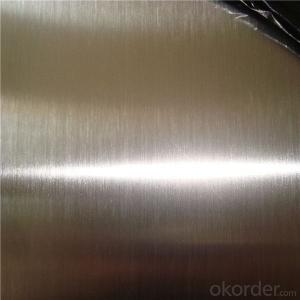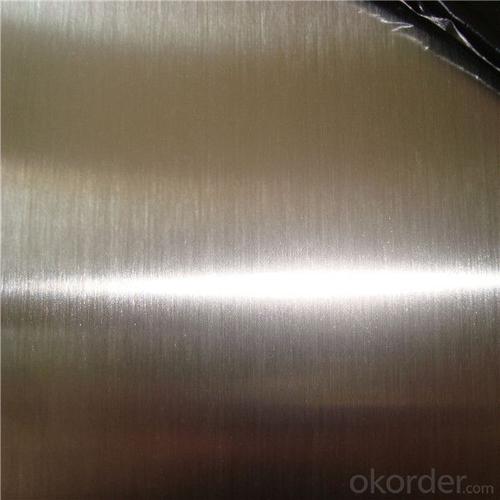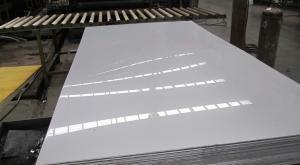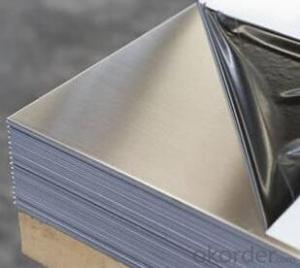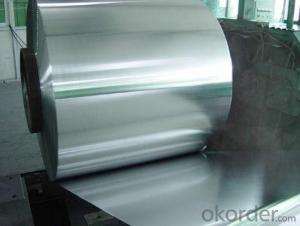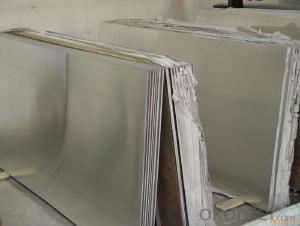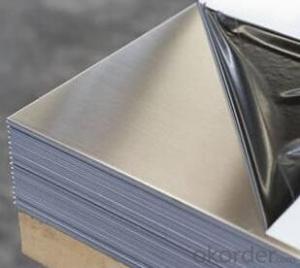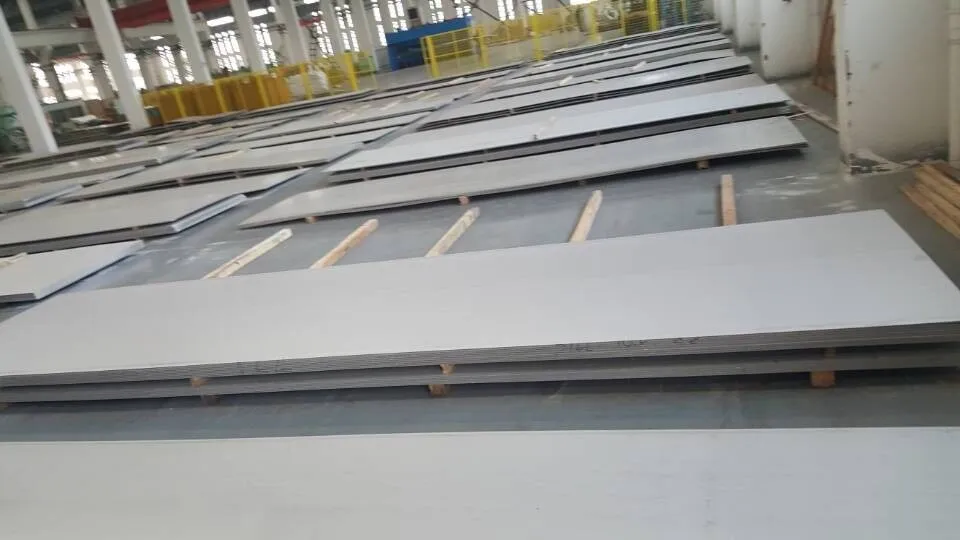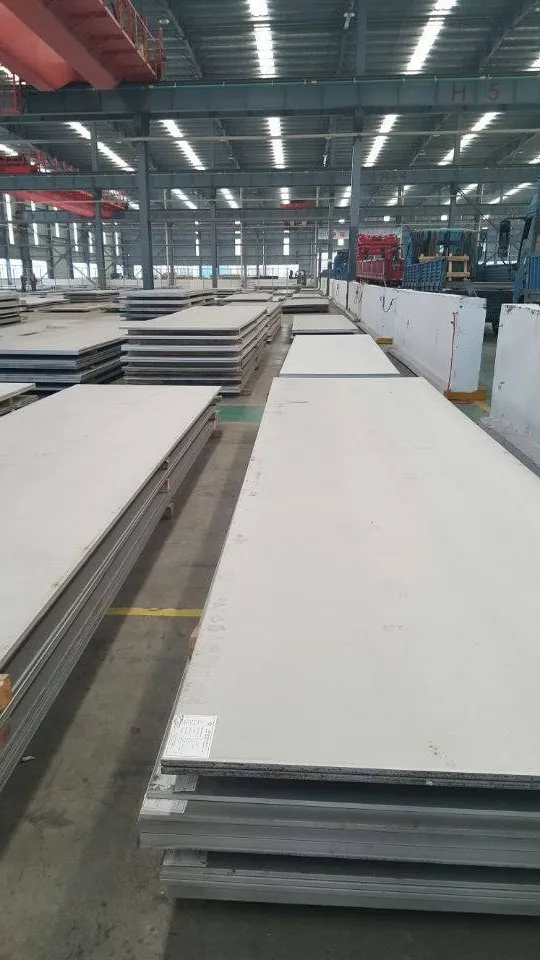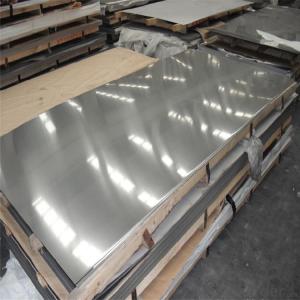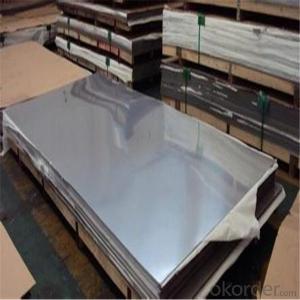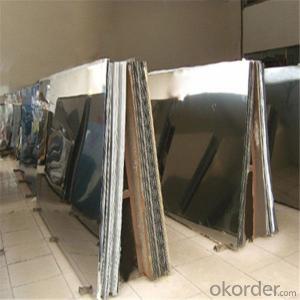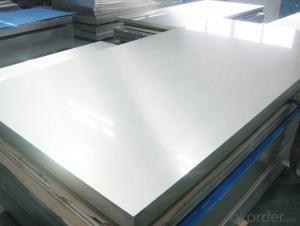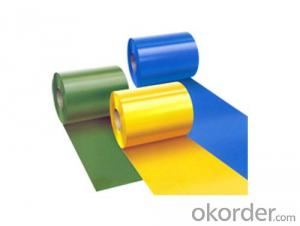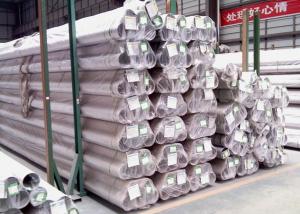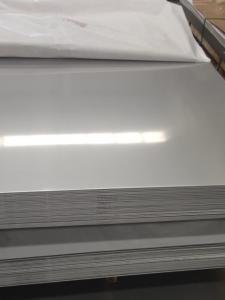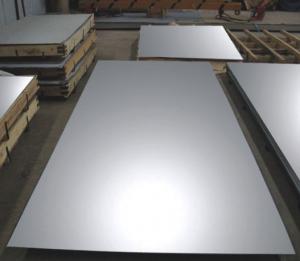Stainless Steel Plate 2520 duplex 1219x2438mm
- Loading Port:
- Shanghai
- Payment Terms:
- TT OR LC
- Min Order Qty:
- 3 m.t.
- Supply Capability:
- 20000 m.t./month
OKorder Service Pledge
OKorder Financial Service
You Might Also Like
Specification
2205 2507 2520 duplex stainless steel plate
We are a professional manufacturer of stainless steel sheet. According to ASTM, JIS and AISI,GB, standards, Jaway steel enhances effectiveness and of quality control from selecting the raw materials, cutting, slitting, shearing, surface treatment, packing, exporting of the existing products.
Product Description
Details of Stainless Steel Sheet/Plate: > > > > > > > > > > > > > > > > >
2205 stainless steel plate
Type | Stainless steel plates/Stainless plate/Stainless sheet |
Thickness | 1mm-140mm |
Width | 2000mm |
Length | 1m---8mm or as customer |
Standard | JIS,ASME,ASTM,EN etc |
Material | 201,202,301,304,304L,316,316L,317, 317l ,321,309S,310S,410,2Cr13,3Cr13,2205 |
Brand name | TISCO,BG,ZPSS,YUSCO,JISCO,BXIN,KSK,KRUPP |
Application range | Foodstuff, gas, metallurgy, biology, electron, chemical, petroleum, boilers, nuclear, energy and medical equipment, fertilizer, etc |
Packing | Standard export sea-worthy packing or as the customer’s requirement |
Productivity | 500 tons per month |
Note | We can produce other standards as the customer’s requirement |
Products Show
These are the normal items, for the special requirements,we can also meet.
Surface finish | Characteristics and application |
NO.2B | The surface brightness and flatness of no2B is better than no2D. then through a special surface treatment to improve its mechanical properties,No2B could nearly satisfy comprehensive uses. |
NO.3 | Polished with abrasive belt of git#100-#200, have better brightness with discontinuous coarse stria, used as inner and external ornaments for building, electrical appliances and kitchen utensils etc. |
NO.4 | Polished with abrasive belt of grit #150-#180,have better brightness with discontinuous coarse stria,but thinner than No3, are used as bathtub buildings inner and external ornaments electrical appliances kitchen utensils and food processing equipment etc. |
HL | Polished with abrasive belt of grit #150-#320 on the NO.4 finish and has continuous streaks, mainly used as buildings ornaments elevators,door of building, frontal plate etc. |
BA | Cold rolled, bright annealed and skin-passed, the product have excellent brightness and good reflexivity like mirror,kitchen apparatus,ornament etc. |
8K | The product have excellent brightness and prefer reflexivity can to be the mirror. |
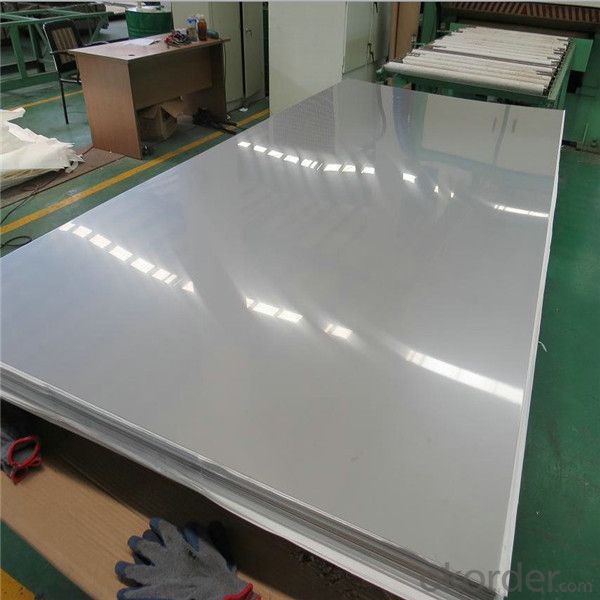
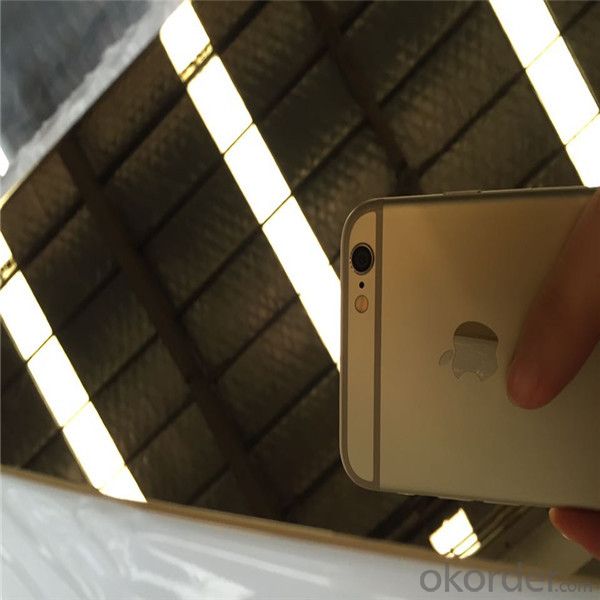
Our Advantages
• All products are made of high-quality imported raw materials.
• Our products are certified by ISO9001:2008 authentication quality systems.
• we are nominated as the AAA enterprise by Jiangsu government.
• Quick Response to Your Enquiry.
- Q: What is 3042B stainless steel?
- 2B: the fog surface; after cold rolling, after heat treatment and acid washing, the finishing surface is made to be a fair light. As the surface is smooth, easy to re grinding, make the surface more bright, wide range of uses, such as tableware, building materials, etc.. Surface treatment with improved mechanical properties almost meets all uses.Stainless steel can be divided into Cr series (400 Series), Cr - Ni series (300 Series), Cr - Mn - Ni (200 Series), Heat-Resisting Chromium Alloy Steel (500 Series) and precipitation hardening system (600 series).
- Q: Can stainless steel sheets be used in the construction industry?
- Yes, stainless steel sheets can be used in the construction industry. They are commonly used for a variety of applications including roofing, cladding, structural supports, and interior finishes. Stainless steel offers excellent corrosion resistance, durability, and aesthetic appeal, making it a popular choice for construction projects.
- Q: Are stainless steel sheets suitable for electrical enclosures?
- Indeed, electrical enclosures can be made using stainless steel sheets. Stainless steel possesses remarkable attributes such as exceptional strength, resistance to corrosion, and durability, rendering it a perfect material for safeguarding electrical components. It affords a superior level of safeguarding against environmental factors like moisture, dust, and extreme temperatures. Furthermore, stainless steel boasts commendable electrical conductivity, which is indispensable for proper grounding and shielding. It also provides a good degree of electromagnetic compatibility (EMC), thereby diminishing the likelihood of electromagnetic interference (EMI) in delicate electrical equipment. Additionally, stainless steel can be effortlessly cleaned and maintained, guaranteeing a long-lasting and dependable enclosure for electrical applications.
- Q: Advantages and disadvantages of stainless steel
- 1. Chemical properties: resistance to chemical corrosion and electrochemical corrosion resistance in steel is the best, second only to titanium alloy.2, physical properties: high temperature resistant, low temperature resistant and anti cold also.
- Q: What is the weldability of stainless steel sheets?
- The weldability of stainless steel sheets is generally considered to be good. Stainless steel contains a high percentage of chromium, which forms a passive oxide layer on the surface of the metal. This oxide layer provides excellent corrosion resistance and helps prevent the formation of heat-affected zones during welding. However, the weldability of stainless steel can vary depending on the specific grade and thickness of the sheets. Some grades of stainless steel, such as austenitic stainless steels (e.g., 304, 316), are highly weldable and can be easily joined using various welding techniques, including TIG (Tungsten Inert Gas) welding and MIG (Metal Inert Gas) welding. On the other hand, certain grades of stainless steel, such as martensitic or duplex stainless steels, may have lower weldability due to their higher carbon content or different microstructures. These grades often require preheating and post-weld heat treatment to avoid cracking and maintain desired mechanical properties. In addition, the thickness of stainless steel sheets can also affect their weldability. Thicker sheets may require more heat input and specialized welding procedures to ensure proper fusion and avoid distortion. Overall, stainless steel sheets are generally considered to have good weldability. However, it is important to consider the specific grade and thickness of the sheets, as well as the required welding techniques and procedures, to achieve optimal results. Professional guidance and expertise in stainless steel welding are recommended to ensure successful and durable welds.
- Q: What are the different types of surface finishes available for stainless steel sheets?
- Stainless steel sheets offer a range of surface finishes, each with its own distinct qualities and uses. 1. The most commonly used finish for stainless steel sheets is No. 1 Finish. It is achieved through hot rolling and annealing, resulting in a rough, dull appearance with visible grain lines. No. 1 finish is ideal for applications where a rough surface texture is desired, such as in industrial or structural uses. 2. No. 2B Finish is obtained by cold rolling the stainless steel sheet after a No. 1 finish, followed by annealing and descaling. It has a smooth, reflective surface with a slight matte appearance. No. 2B finish is frequently chosen for applications that require a clean, aesthetically pleasing look, such as kitchen appliances, architectural accents, and decorative items. 3. Known as a brushed finish, No. 3 Finish is achieved by mechanically polishing the stainless steel sheet with abrasive materials. It creates a satin-like appearance with a unidirectional pattern of fine lines. No. 3 finish is often used for decorative purposes, such as in furniture, signage, and elevator doors. 4. No. 4 Finish is similar to No. 3 finish, but it is achieved by mechanically polishing the stainless steel sheet with finer abrasives. This produces a smoother, more refined surface with a low gloss. No. 4 finish is commonly chosen for applications that require good corrosion resistance and easy maintenance, such as kitchen equipment, automotive trim, and architectural components. 5. The most reflective and luxurious surface finish for stainless steel sheets is No. 8 Mirror Finish. It involves progressively polishing the metal with finer abrasives until a highly reflective mirror-like surface is achieved. No. 8 mirror finish is often selected for decorative and high-end applications, such as architectural accents, jewelry, and luxury consumer goods. 6. Embossed finishes involve stamping or pressing a pattern onto the stainless steel sheet, creating a textured surface. These finishes can range from simple designs to intricate patterns, offering both aesthetic appeal and improved slip resistance. They are commonly used in applications that require both functionality and visual interest, such as in flooring, countertops, and wall cladding. In summary, the choice of surface finish for stainless steel sheets depends on the desired appearance, functionality, and performance requirements of the specific application.
- Q: How do you prevent discoloration or staining on stainless steel sheets?
- To prevent discoloration or staining on stainless steel sheets, there are several steps one can take. First, it is important to clean the sheets regularly using mild soap or detergent and warm water. Avoid abrasive cleaners or scrub brushes that could scratch the surface. After cleaning, rinse thoroughly with clean water and dry with a soft cloth to prevent water spots. In addition, it is crucial to avoid using harsh chemicals like bleach, ammonia, or chlorine-based cleaners on stainless steel sheets. These chemicals can cause discoloration or staining. Instead, opt for stainless steel-specific cleaners or natural alternatives such as vinegar or lemon juice. Proper storage is also essential. Stainless steel sheets should be kept in a clean and dry environment to prevent exposure to moisture or humidity. Moisture can lead to corrosion or rust, resulting in discoloration. If the sheets are stored outdoors, make sure to adequately cover them to protect against rain or snow. Applying a protective coating or sealant on stainless steel sheets can help prevent discoloration or staining. There are various products available specifically designed for stainless steel protection. It is important to follow the manufacturer's instructions for application and reapplication if necessary. Furthermore, it is important to avoid contact between stainless steel sheets and other reactive metals such as iron, copper, or aluminum. When these metals come into contact with stainless steel, a chemical reaction called galvanic corrosion can occur, leading to discoloration and staining. To prevent this, ensure separation or isolation between stainless steel and reactive metals. Regular maintenance is crucial in preserving the appearance and integrity of stainless steel sheets. Regularly inspect the sheets for any signs of discoloration, staining, or damage. Address any issues promptly to prevent further deterioration. If stubborn stains are present, use a non-abrasive stainless steel cleaner and a soft cloth to gently rub the affected area in the direction of the grain. By following these preventive measures, the appearance and integrity of stainless steel sheets can be maintained, ensuring they remain free from discoloration or staining for an extended period of time.
- Q: What is the water absorption rate of stainless steel sheets?
- Stainless steel sheets have a typically very low or negligible rate of water absorption. Renowned for its superb corrosion resistance and impermeability to liquids, including water, stainless steel is extensively acknowledged. Thanks to its distinct composition and surface properties, water absorption and penetration into stainless steel sheets are not easily facilitated. Hence, stainless steel is favored for numerous moisture-sensitive applications, for instance, in the food and beverage sector, medical equipment, and outdoor structures.
- Q: Can stainless steel sheets be cut or shaped?
- Yes, stainless steel sheets can be cut or shaped to meet specific requirements. Stainless steel is a versatile material that can be easily manipulated using different cutting and shaping techniques. Cutting stainless steel sheets can be done using methods such as shearing, laser cutting, or waterjet cutting. Shaping stainless steel sheets can be achieved through processes like bending, rolling, or stamping. These techniques allow for the creation of various forms and designs, making stainless steel sheets a popular choice in industries such as construction, automotive, and manufacturing.
- Q: Can stainless steel sheets be used for elevator interiors?
- Yes, stainless steel sheets can be used for elevator interiors. Stainless steel is a popular material choice for elevator interiors due to its durability, aesthetic appeal, and ease of maintenance. It is resistant to corrosion, scratches, and stains, making it ideal for high-traffic areas like elevators. Stainless steel sheets can be customized to fit the specific design requirements of the elevator, and they come in a variety of finishes, such as brushed, mirror, or patterned, allowing for a sleek and modern look. Additionally, stainless steel is easy to clean and sanitize, which is especially important in public spaces like elevators where hygiene is a priority. Overall, stainless steel sheets offer a versatile and practical solution for elevator interiors.
Send your message to us
Stainless Steel Plate 2520 duplex 1219x2438mm
- Loading Port:
- Shanghai
- Payment Terms:
- TT OR LC
- Min Order Qty:
- 3 m.t.
- Supply Capability:
- 20000 m.t./month
OKorder Service Pledge
OKorder Financial Service
Similar products
Hot products
Hot Searches
Related keywords
